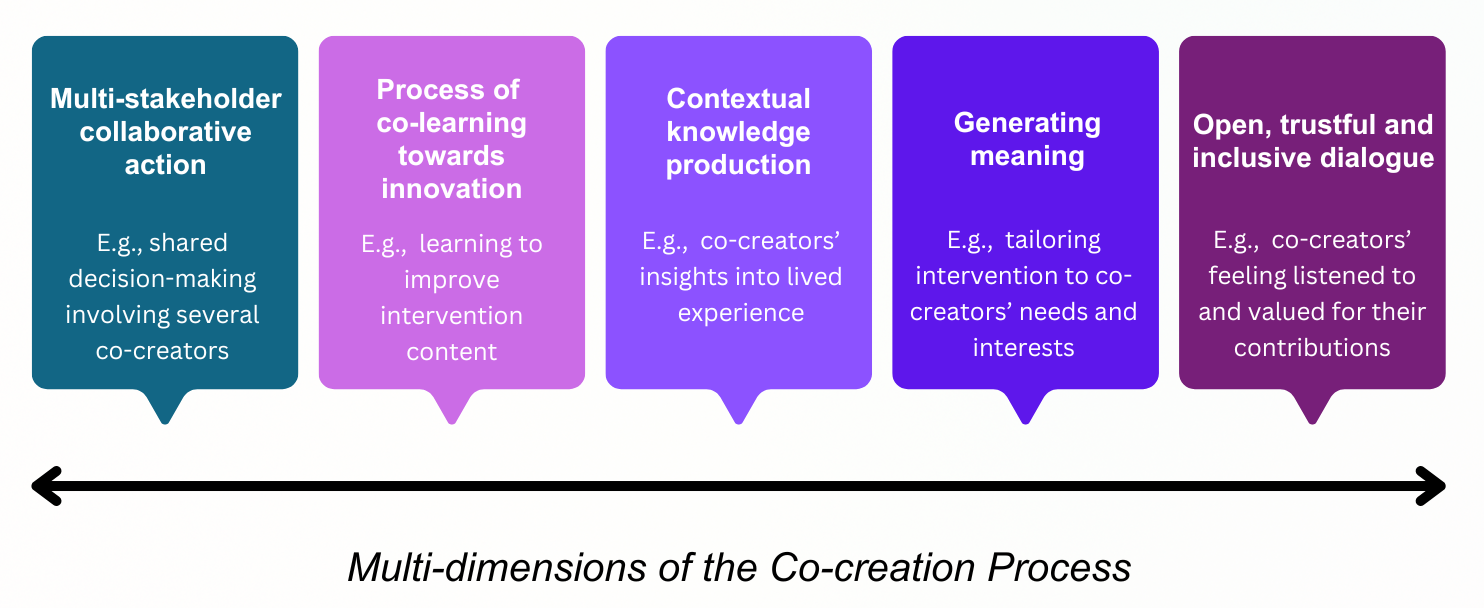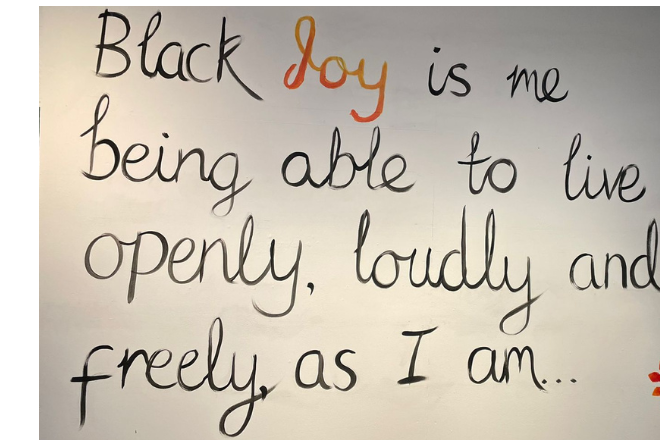Why co creation needs to move beyond consultation

As part of my PhD, I have contributed to Health CASCADE, a project focused on advancing evidence based co-creation approaches in public health. I also contributed to the ComPHAD project (Community and Public Health Approaches to Dementia Research), a National Institute for Health and Care Research (NIHR)-funded initiative led by the University of Cambridge in partnership with several UK universities.
The purpose of ComPHAD is to ensure that dementia research reflects the diversity of today’s society by working closely with communities, healthcare providers and organisations across the UK to shape future health and care studies. While the Cognitive Function and Ageing Studies (CFAS I & II) have informed national understanding of dementia for over three decades, their findings - based predominantly on white participants - unrepresentative of the UK’s evolving population. As part of my work on this project, I recently conducted a study reviewing grey literature, which entails information published outside of traditional academic channels, such as reports, theses or documents from governments, Non-Governmental Organisations (NGOs) or community organisations. The study looked at how participatory and co-produced research worked with groups of people that have an increased risk of dementia, but have so far been under represented in research. These groups of people are diverse populations - such as those with migration backgrounds and differing cultural identities. These groups are often not included in data about those who are living with dementia and their needs remain poorly understood in dementia research.
These communities often experience overlapping forms of disadvantages. For example, racial and ethnic inequality, insecure migration status and social exclusion which can collectively heighten their risk of developing dementia.
Through this work, it became increasingly clear that, although co-creation is frequently mentioned in research and policy, in practice, it often falls short; what is called co-creation is frequently limited to basic consultation, without genuine shared decision making. This gap led me to investigate how co-creation is being practised within community and third-sector settings (such as local health initiatives, council initiatives, Non-Governmental Organisation initiatives, but excluding non-healthcare sessions such as grassroots and advocacy groups) particularly in the context of dementia research. The “grey literature review” I mentioned, which explored the use of participatory methodologies with populations in England at increased risk of dementia, was a key part of my work.
What the evidence says
In our recent review of community-based projects, we noticed that most of these projects only involved local people in a limited way, by asking for their opinions or including them in activities that had already been planned. Very few projects gave communities real power to make decisions or shape the direction of the work.
Most of the time, people were only brought in during the middle of the project, after key decisions had already been made. They usually were not involved in planning, deciding what the project should focus on or reviewing how well it worked. This shows a common problem: communities, especially those that are often overlooked, are not necessarily being fully included in a meaningful way.
The review also identified gaps in the use of co-creation process dimensions (see below), particularly:
- Co-learning towards innovation
- Open, trustful and inclusive dialogue
These are dimensions we identified that reflect a trustworthy co-creation process but may be left out especially in environments with strict rules or top-down structures that make real collaboration difficult.

Co-creation should not be a box-ticking exercise
This resonated with my own understanding, having reviewed published research papers about co-creation in different research fields, across types of co-creation and using different theories.
In many projects labelled as co-creation, stakeholder involvement often seemed limited to formal procedures - such as signing forms, giving consent or filling out feedback sheets rather than fostering meaningful, long-term change. While feedback can be a useful part of co-creation, relying on it alone falls short of genuine collaboration, which arguably requires ongoing involvement and shared decision-making throughout the research process. Moreover, some project slack clear reporting beyond academic papers, provide little follow-up and offer no transparency around decisions or lasting impact for those involved. It is therefore understandable that communities may feel disillusioned and withdraw from the process.
Our work also reminded me that even well-meaning efforts can fall short. Without (a more) effective and intentional design, co-creation can perhaps easily drift into tokenism, especially in the nonprofit sector, where time and resource pressures may push organisations to favour quicker, less inclusive methods. I echo the idea that “glorifying methods” over relationships or outcomes risks hiding power imbalances that sit beneath the surface of participatory work.
What can we do differently?
For me, working on this review helped to bring out a clear and important message about what needs to be done. It affirmed the importance of previous work I had undertaken:
- Become acquainted with the theories used for co creation and build on them for best practices.
- Being clear about your broader theoretical position and tools from the start. We, recommend Critical Realism for Public Health Co-creation. This extends to the implementation and evaluation frameworks and tapping into knowledge from the Co creation Database.
- Consider co adaption to adapt existing interventions in new contexts where the co-creation process dimensions maintain.
- Bringing communities in at the very beginning not just when the funding has been secured or the project designed.
- Focusing on relationships, not just research outputs building trust takes time, care and continuity as well as other psychological and ethical considerations.
- Making power visible and negotiable co-creation is not just about listening, it is about making efforts towards shared decision-making across its research stages.
In our study, we also recommend using structured tools like the Co creation Process Dimensions and the IAP2 Spectrum to help clarify what level of stakeholder engagement is genuinely taking place. In the former, the term ‘dimensions’ refers to the five core processes that underpin co-creation projects:
- Multi-stakeholder collaborative action
- A process of co-learning towards innovation
- Contextual knowledge production
- The generation of meaning
- Open, trustful and inclusive dialogue.
The Co-creation Process Dimensions are provided (above). In contrast, the IAP2Spectrum outlines levels of participation - inform, consult, involve, collaborate and empower - each indicating the extent of influence that stakeholders (i.e. public) have within a given participatory process.
A final thought
For co-creation to hold genuine value, it must be rooted in principles of equity, humility and reciprocity (making sure there is something in it for everyone involved). My recent work aims to move beyond broad aspirations by offering a clearer perspective to thoughtfully consider what meaning full participation of stakeholder entails in context of co-creation projects within public health research and beyond.
Please read the full review that inspired this blog.
Messiha,K., Thomas, N., Brayne, C., Agnello, D.M., Delfmann, L., Giné-Garriga, M.,Lippke, S. and Downey, J., 2025. Grey literature scoping review: a synthesis of the application of participatory methodologies in underrepresented groups at an elevated risk of dementia. BMC Medical Research Methodology, 25(1), p.122.
The Co-creation Process Dimensions Diagram (Messiha et al., 2025) is taken from The Co-creation Process Dimensions.



.png)

.png)

.png)
.png)


.png)
.png)